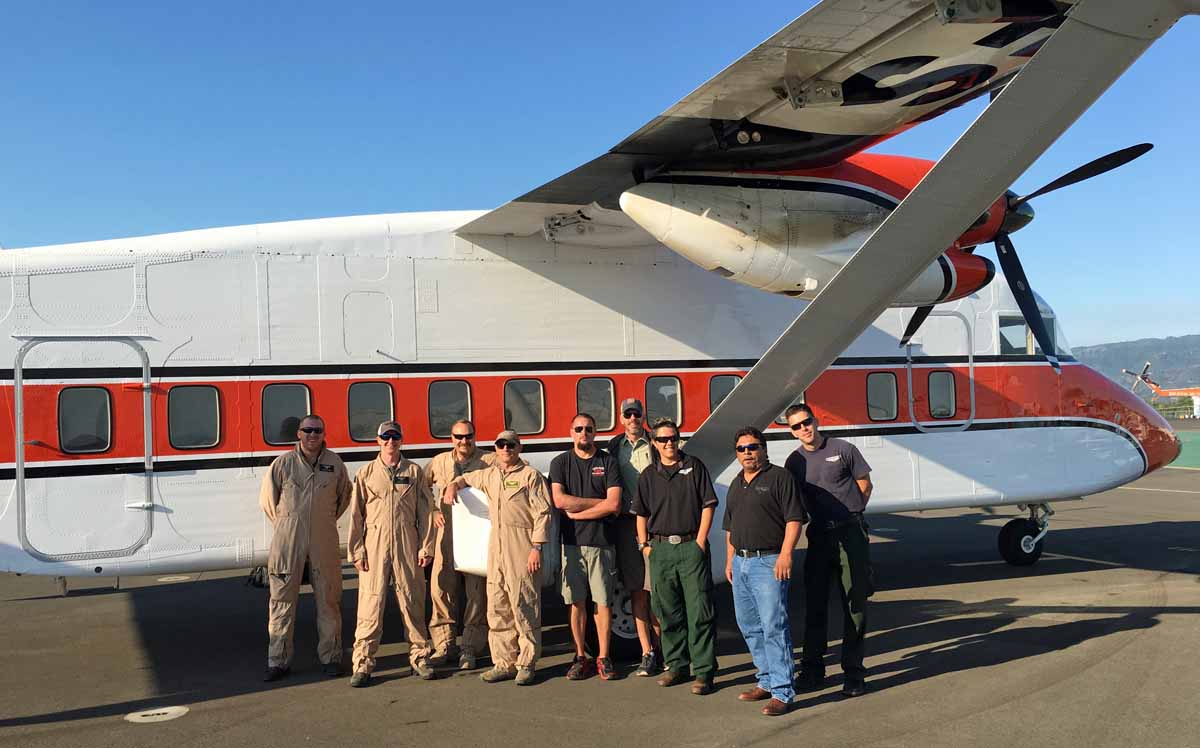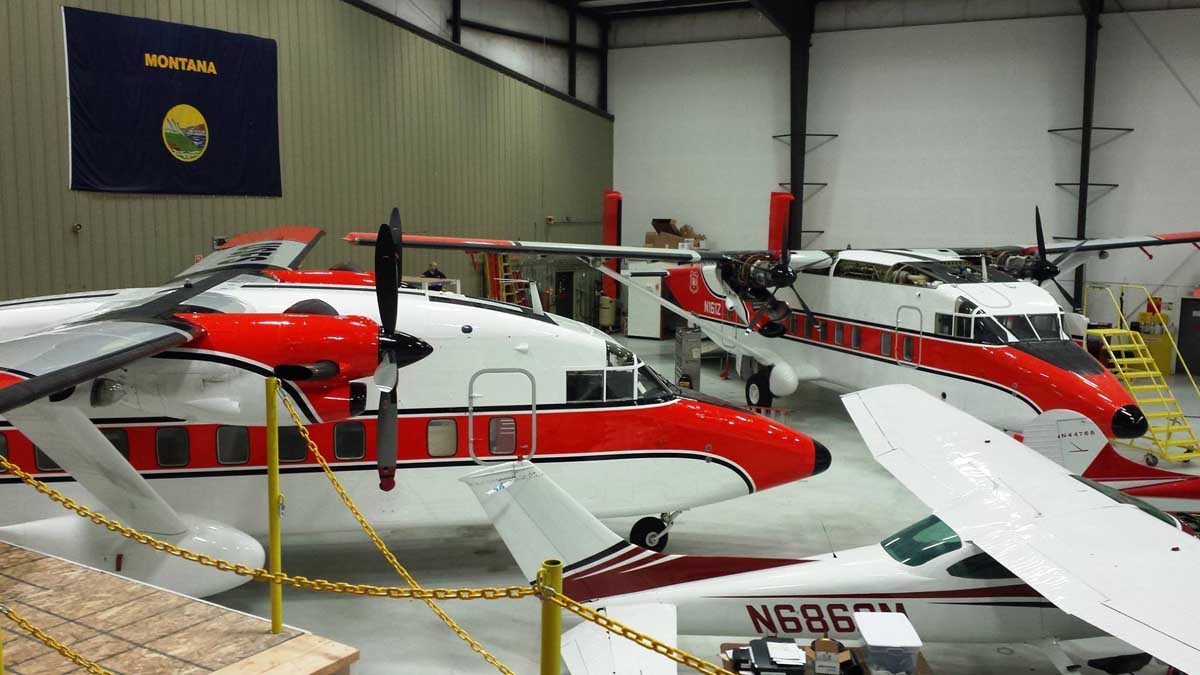
The National Defense Authorization Act for 2014 signed by the President December 13, 2013 not only transferred seven Coast Guard HC-130H aircraft to the U.S. Forest Service to be converted into air tankers, it also directed that 15 C-23B Sherpas be transferred from the U.S. Army to the USFS. The legislation directed that the change of ownership occur within 45 days of the bill being signed.
Now that over 2 1/2 years have passed, the USFS has one Sherpa that is fully reconfigured, operational, and available to be used on a daily basis. The agency refers to it as the National Logistical Sherpa and is using it this year to haul cargo. It will not be used this year for paracargo or smokejumper missions.
According to an information sheet distributed by the Forest Service, the aircraft has a crew of four, two pilots and two loadmasters. It can carry up to 18 passengers or a payload of 7,280 pounds of fuel and cargo. It has a range of 550 miles (with 4,000 pounds of cargo), a cruise speed of 198 knots, is IFR capable, and costs $2,310 an hour to operate.
The military version of the aircraft is called the C-23B. The civilian variation is variously known as SD3-60, SD-360, and Short 360.
The Forest Service is calling their aircraft an SD3-60 because they are pursuing Federal Aviation Administration civil certification of the non-certificated C-23B aircraft. This would enable the agency to use them to perform several aerial firefighting missions in addition to delivering smokejumpers and cargo.
These tasks could include transporting fire crews, incident management teams, and other overhead and support personnel to airfields and airports that larger transport planes could not use; transporting cargo and communications equipment; and supporting all-hazards incidents. In the future SD3-60s could also be used for off-season/non-fire personnel/administrative support; interagency cooperative agreements (i.e. DoD jumpers, Air Force Academy, Customs & Border Protection); smokejumper and rappel boost; large fire support; Law Enforcement and Investigations Rapid Response Teams; tactical supply support; infrared mapping; search and rescue; wild horse feeding; and as a training platform.
The USFS expects to bring 9 more of the 15 aircraft into service beginning in 2017 primarily to be used as smokejumper aircraft. One will be used for parts while four will remain in storage for the time being.
The aircraft will be flown by USFS and contractor pilots, under a Government-Owned/Mixed-Operations (GO/MO) model for the SD3-60 fleet.

Neptune Aviation has the contract for maintenance of the aircraft which includes modifying them to be eligible to be certificated as civilian SD3-60’s. Their work was at first done in Ogden, Utah, but has been relocated to Missoula. Field Aviation in Oklahoma City received a contract for installing glass cockpits.

How do I get a job with the USFS flying C-130s? I have 1500 hours as a NAV and Instructor, but that was a lifetime ago. I do have a good knowledge of fire behavior and weather. Thank you.